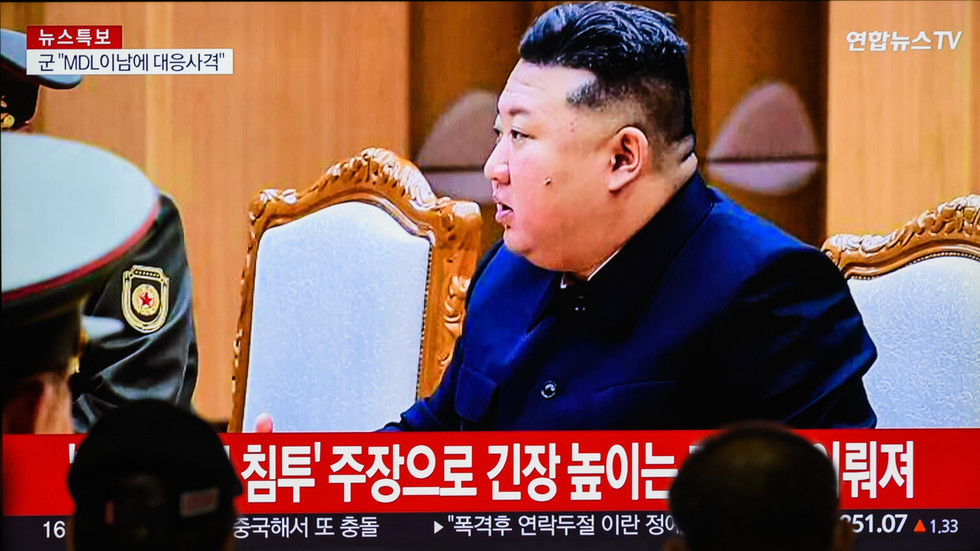On Saturday, North Korea escalated tensions on the Korean peninsula by claiming to have discovered fragments of a crashed South Korean military drone, which they alleged was used for disseminating propaganda over the North Korean capital. According to reports from the state-run Korean Central News Agency (KCNA), the drone was part of a broader campaign involving similar UAVs that had previously been spotted distributing leaflets they deemed as “political propaganda and slander.” The North warned of severe repercussions if they detect further incursions, threatening that any violations of their airspace would be seen as a significant military provocation, potentially leading to retaliatory strikes. This hardline stance was reiterated by Kim Yo-jong, the sister of North Korean leader Kim Jong-un, who asserted that there was “clear evidence” of South Korean airspace violations.
In contrast, the South Korean government has remained ambiguous regarding these allegations. South Korea’s Joint Chiefs of Staff, represented by Colonel Lee Sung-jun, stated that clarifying the situation should rest with North Korea. This reluctance to affirm or deny incursions reflects a broader strategy by South Korea, which is often engaged in a delicate balancing act amid increasing hostility from the North. Over the past weeks, Pyongyang has intensified its confrontational rhetoric, accusing the South of provocations that contribute to border tensions, which were exemplified by North Korea recently demolishing sections of infrastructure leading into the South. The North has expressed a desire to completely sever connections with their southern neighbor, aiming to fortify their defenses along the border.
The rising tensions are underscored by a significant policy shift from North Korea, particularly illustrated by Kim Jong-un’s recent remarks in January, where he suggested abandoning the long-held goal of reunification and instead branded South Korea as the “principal enemy.” This contrasts starkly with the thawing relations witnessed during the late 2010s, particularly when then-US President Donald Trump attempted to mediate and de-escalate tensions through a series of summits with Kim. However, the promising overtures of diplomacy ultimately unraveled when their 2019 meeting in Hanoi failed, leading to accusations of unrealistic demands from both sides. Since then, North Korea has stepped up its missile testing activities as a countermeasure, and, in response, the United States has increased its military maneuvers alongside South Korea.
Kim Yo-jong’s recent statements not only highlight the prevailing anxiety within the North Korean regime regarding perceived threats from the South but also illustrate a broader strategic signaling aimed at both domestic audiences and international observers. She has amplified North Korea’s grievances, painting the South as an aggressor and fueling nationalist sentiments. This narrative serves not only to legitimize North Korean defense policies but also consolidates internal support for the regime during times of economic hardship and international isolation. By portraying South Korea as a consistent adversary, the regime seeks to unify public opinion behind its military posturing and emphasize the necessity of a robust defense.
Additionally, the ongoing military modernization efforts and weapons tests by North Korea reveal a strategic pivot towards emphasizing deterrence capabilities in the face of perceived threats from the US and South Korea. Such developments align with Kim Jong-un’s ambitions to project strength both regionally and on the global stage. This ongoing military build-up and the accompanying hostile rhetoric from Pyongyang present significant challenges for regional stability. The interplay between military escalation and diplomatic engagements has historically been a deeply cyclical process, one which pressures neighboring countries and complicates peace efforts.
As this situation evolves, the international community watches closely, concerned about the potential for miscalculation and the outbreak of hostilities on the peninsula. The era of the rapprochement felt during the early Trump administration appears distant, with both North Korea and South Korea entrenched in their respective narratives. The response strategies of the South and its allies, particularly the US, will be crucial in shaping the future of inter-Korean relations. Amid these geopolitical tensions, the prospect for dialogue remains tenuous, as both sides navigate the complex web of historical grievances, national security concerns, and domestic pressures that define their interactions on the Korean peninsula.

